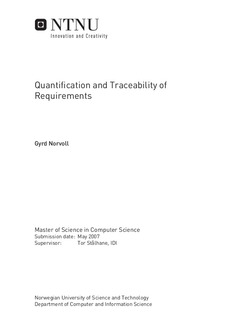| dc.description.abstract | Software development is a highly dynamic process, primarily caused by its foundation in the dynamic human world. Requirements traceability alleviates the detrimental effects of this dynamism by providing increased control over the artifacts of the software development processes and their interrelationships. This thesis investigates how an RT tool should be designed and implemented in order to assist with the tasks of requirements traceability, and outlines a tool that primarily focuses on reducing the work overhead associated with the tasks of implementing requirements traceability in software development projects. Preparatory to the development of the RT tool, the applicability of the traceability models presented in the in-depth study has been confirmed through empirical work. A detailed representation of the models has been compiled, elaborating on the internal representation of artifacts and traces. The models were extended to be able to represent organisational hierarchies, enabling trace information analysis to deduce the context of important decisions throughout the software development processes, an important tool in understanding how requirements are determined. The thesis presents a requirements specification and architecture with a firm foundation in the findings of the in-depth study, outlining an RT tool that addresses important issues concerning the implementation of requirements traceability, in particular focusing on reducing the associated work overhead. Based on the requirements specification and architecture, a evolutionary prototype is developed, giving its users an impression of the functionality of the outlined RT tool. The prototype addresses the issues pointed out by the requirements specification and architectural description, and, throughout development, attention is given the evolvability of the prototype. Consequently, the prototype provides a good foundation for the future development of a complete RT tool. | nb_NO |

